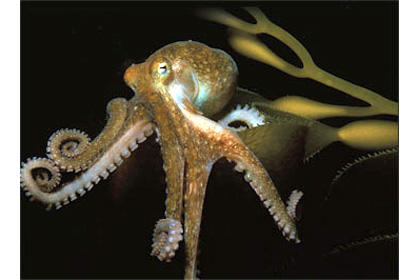While diving off Huntington Beach recently, I was asked if I could come up with an interesting way to prepare scallops. During our conversation our boat captain offered to take us to her favorite scallop spot nearby so I said, “Let’s go.”
Within the hour we had enough scallops to prepare dinner for four. This rock scallop flatbread pizza can be served as an appetizer or enjoyed as an entre’e.
Remember, “Always ‘Stay Legal'” and never take more than you’ll eat.”
Serves 4
Ingredients:
2 prepared flatbreads
16 medium scallops
8 ounces fresh mozzarella, sliced
1/2 cup whole milk mozzarella, grated
2 large Roma tomatoes, sliced
6 cloves fresh garlic, crushed and minced
1/4 cup extra-virgin olive oil
4 slices smoked bacon, cooked and diced
1/2 red bell pepper, diced
1/2 small red onion, diced
Cilantro sprigs, fresh thyme and olive oil for garnish
Directions:
Preheat oven to 425°F and arrange rack to top position. Lay flatbreads on a clean dry surface and brush with olive oil, top evenly with minced garlic. Planning for eight sections when sliced, place Roma tomato slices in two rows of four. Top the tomato with fresh mozzarella slices and then place a scallop on each of the tomato and cheese sections. Sprinkle the entire pizza with diced red onion, diced red pepper, and diced bacon. Top with whole milk mozzarella shreds. Place on the top rack of oven and bake until the crust is golden brown and the cheese is bubbly, approximately 12-15 minutes. Remove from the oven and allow the pizza to rest for a few minutes before garnishing with cilantro and herbs. Finish with a very light drizzle of olive oil and enjoy immediately.
Wine Pairing
Scallops pair well with Chablis, dry Riesling and Bordeaux Blanc whites. Chardonnay lovers, skip the oaky, buttery chardonnays in favor of unoaked varietals.
About Rock Scallops
The purple-hinge rock scallop is locally common shellfish. It can be identified by its distinctive shell, typically having an irregular oval outline, and a tentacle-bearing mantle, usually orange or gray. Both valves bear a zone of purple pigment. Adults typically are firmly attached to the substratum, in contrast to most other scallops that live free on sand or mud bottom. Throughout its range from Sitka, Alaska, to Magdalena Bay, Baja California, Mexico, the rock scallop is generally found from the lower intertidal to depths as great as 100 feet. Offshore reefs are typically populated, but concrete pier pilings and jetty rock at entrances to bays in southern California have become favored habitats. The present bag limit is 10.
Source: California Department of Fish & Game









